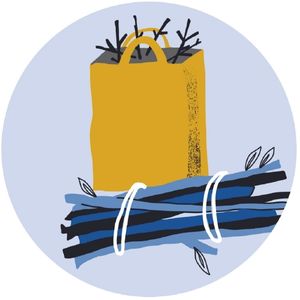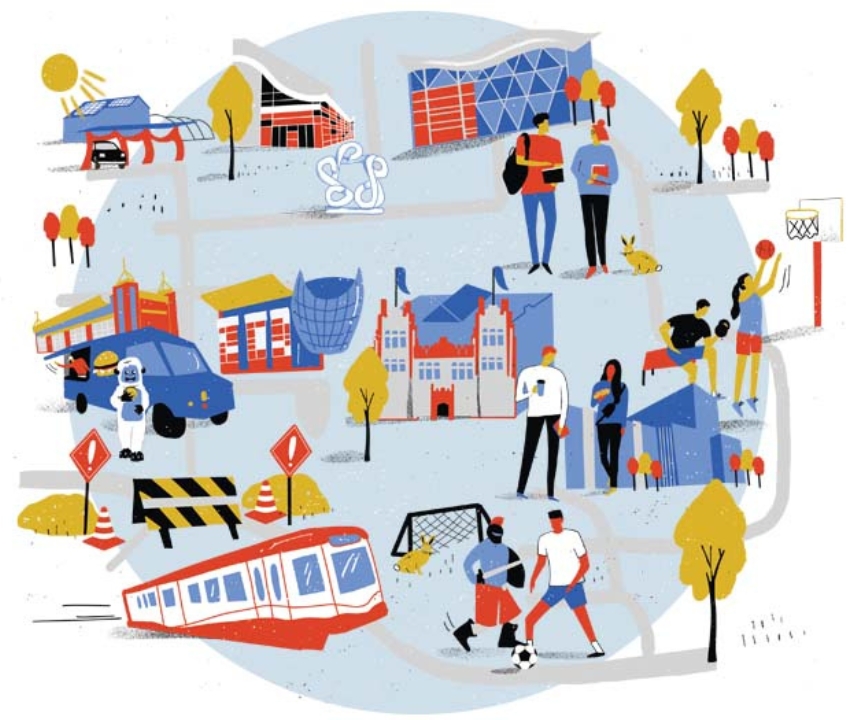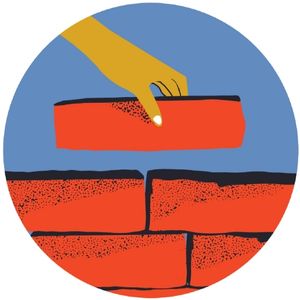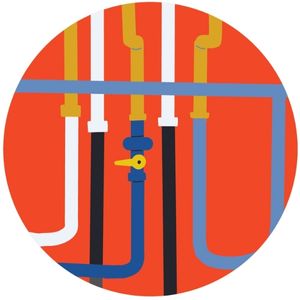"A cornerstone of campus life, dedicated to promoting health and supporting student learning, community and wellness on campus."
In August, SAIT launched a four-year redevelopment project to replace Campus Centre with a new building. LINK brings you an insider's look at what's happened so far — and what's next!
 The north end of the SAIT / Alberta University of the Arts / Jubilee C-Train station remains open. Some 60% of people coming to campus enter from here, and work is ongoing to keep this route accessible despite construction.
The north end of the SAIT / Alberta University of the Arts / Jubilee C-Train station remains open. Some 60% of people coming to campus enter from here, and work is ongoing to keep this route accessible despite construction.
 Saitsa’s administrative offices are operating out of the Saitsa Resource Centre (MC107, Stan Grad Centre).
Saitsa’s administrative offices are operating out of the Saitsa Resource Centre (MC107, Stan Grad Centre).
 The Odyssey Café’s temporary home during construction is NN120 (Senator Burns Building).
The Odyssey Café’s temporary home during construction is NN120 (Senator Burns Building).
 First it was the Spartacus Lounge; then Sparty’s. Now the Gateway Restaurant & Bar is transforming into a food truck, and its Events Team is hosting live music events at venues across Calgary. saitsa.com/gateway
First it was the Spartacus Lounge; then Sparty’s. Now the Gateway Restaurant & Bar is transforming into a food truck, and its Events Team is hosting live music events at venues across Calgary. saitsa.com/gateway After 40 years of hibernation, Tedi the Yeti has emerged from myth to become Saitsa’s mascot.
After 40 years of hibernation, Tedi the Yeti has emerged from myth to become Saitsa’s mascot. 
BUILDING MATERIALS
549 TONNES
Building bricks are sent to a recycling facility for reuse; concrete and masonry are processed into base material and engineering fill for new construction.

ORGANIC WASTE
12 TONNES
Wood is chipped and recycled for other wood products; other yard waste is processed into compost or mulch.
GENERAL NON-RECYCLABLE GARBAGE
89 TONNES
TIN AND STEEL
59 TONNES
Metals processed for recycling, shipped to world markets, based on commodity pricing, or melted down.

Oki, Âba wathtech, Danit'ada, Tawnshi, Hello.
SAIT is located on the traditional territories of the Niitsitapi (Blackfoot) and the people of Treaty 7 which includes the Siksika, the Piikani, the Kainai, the Tsuut’ina and the Îyârhe Nakoda of Bearspaw, Chiniki and Goodstoney.
We are situated in an area the Blackfoot tribes traditionally called Moh’kinsstis, where the Bow River meets the Elbow River. We now call it the city of Calgary, which is also home to the Métis Nation of Alberta.



